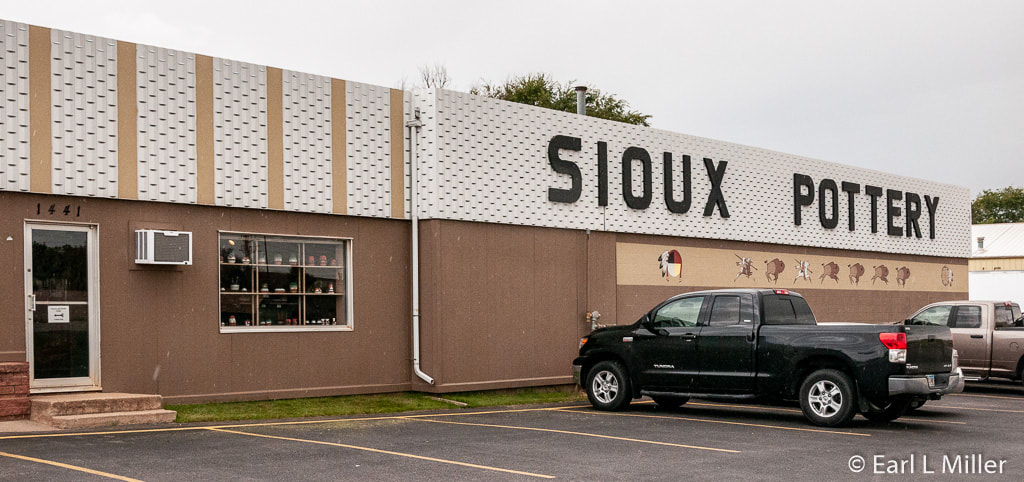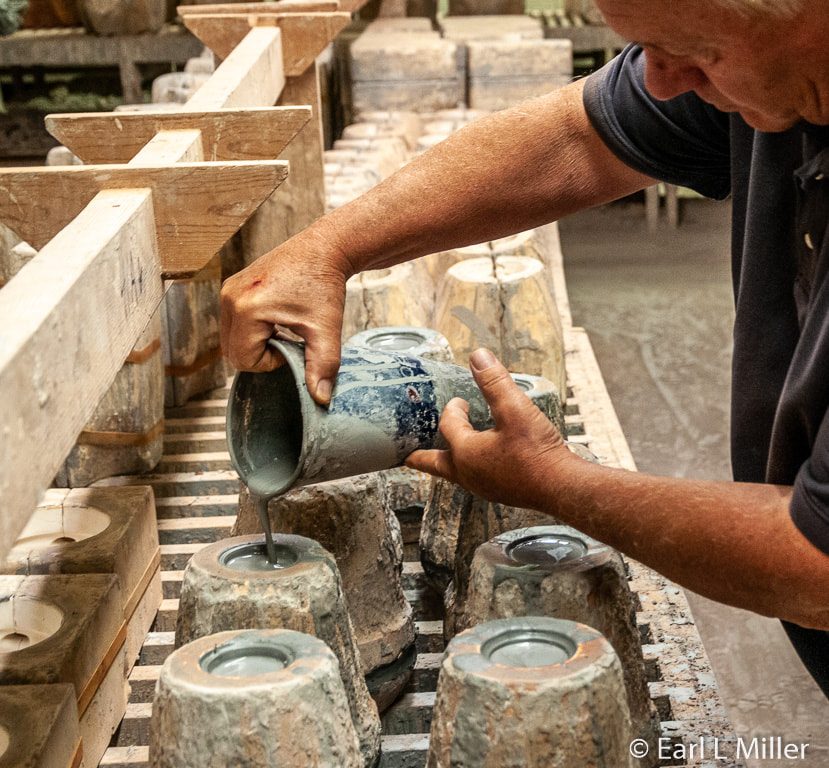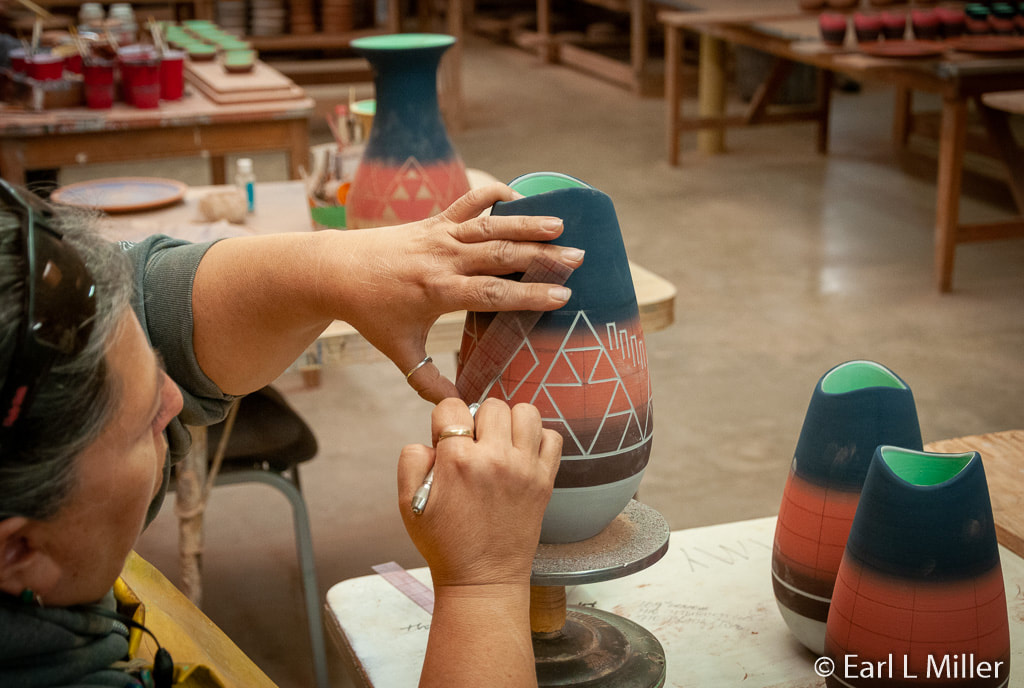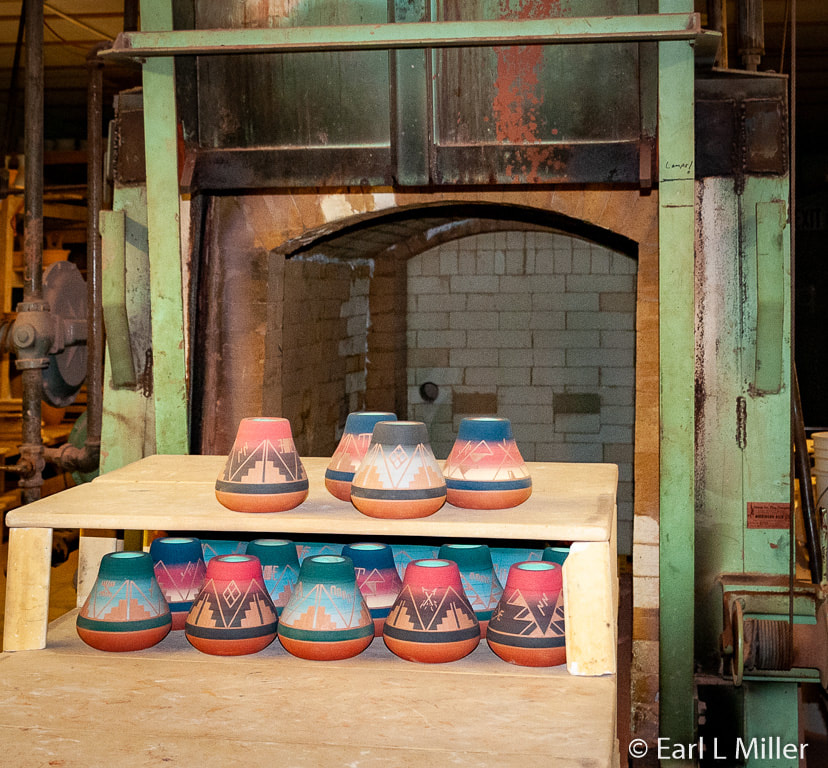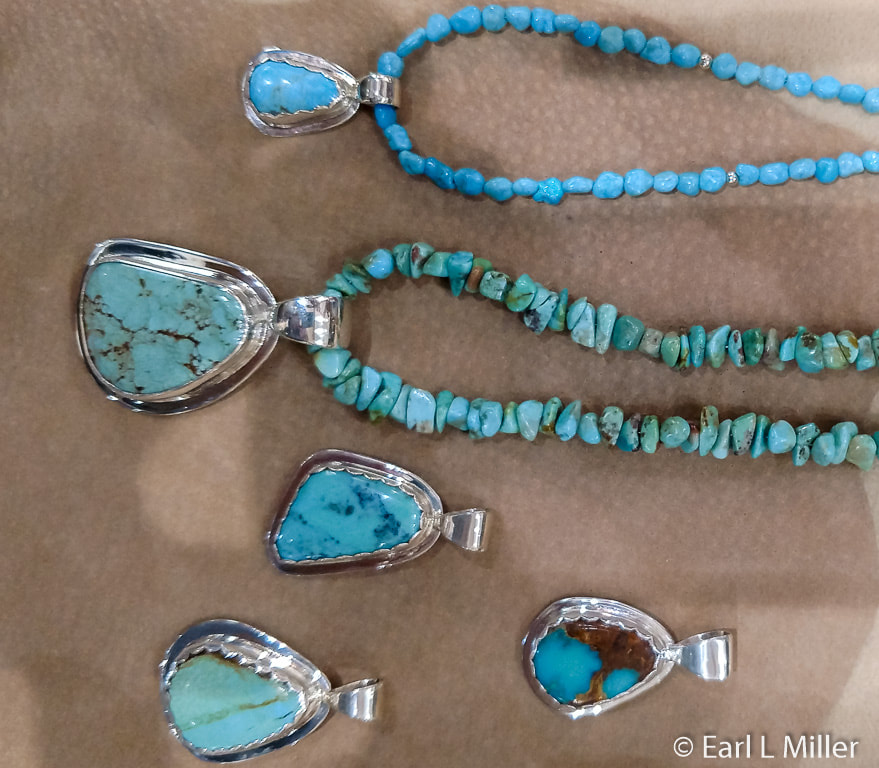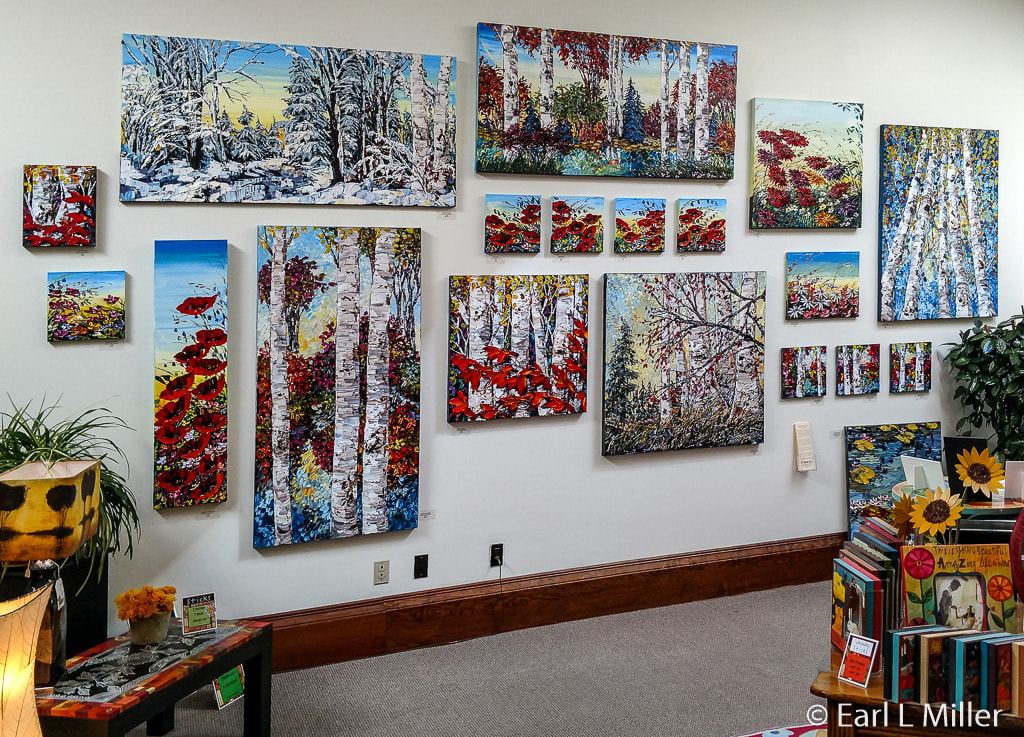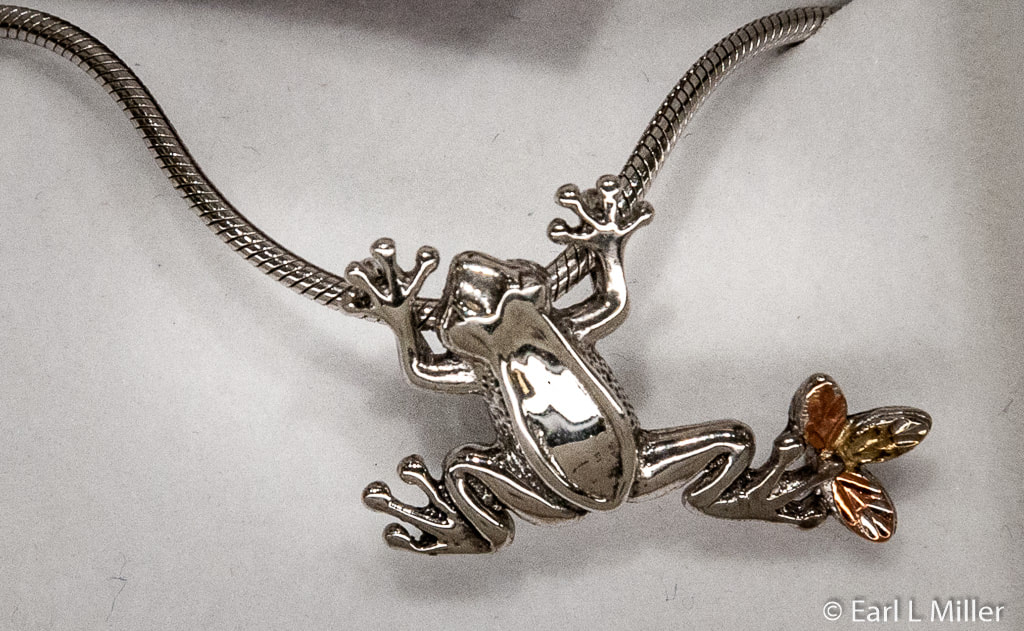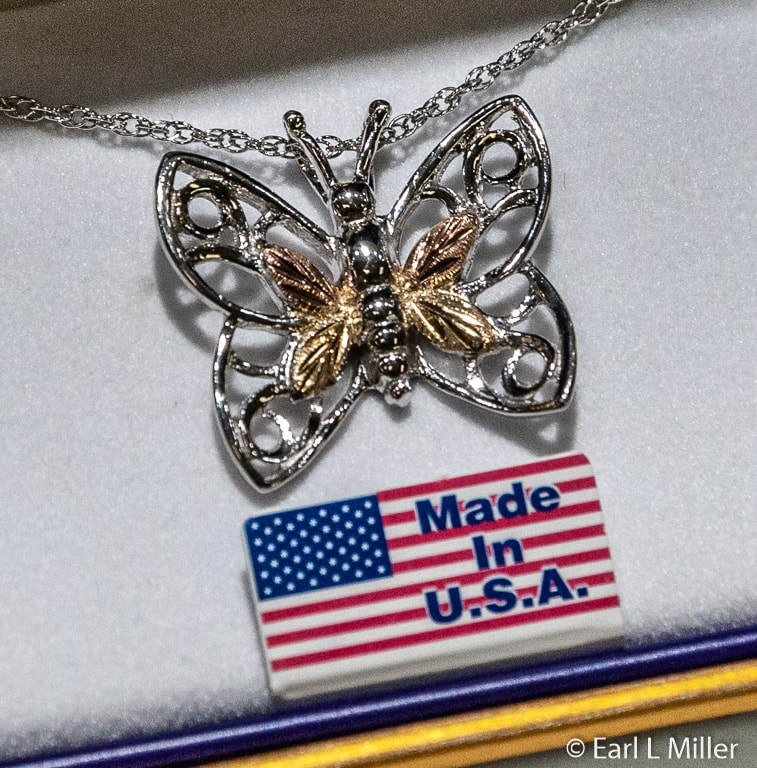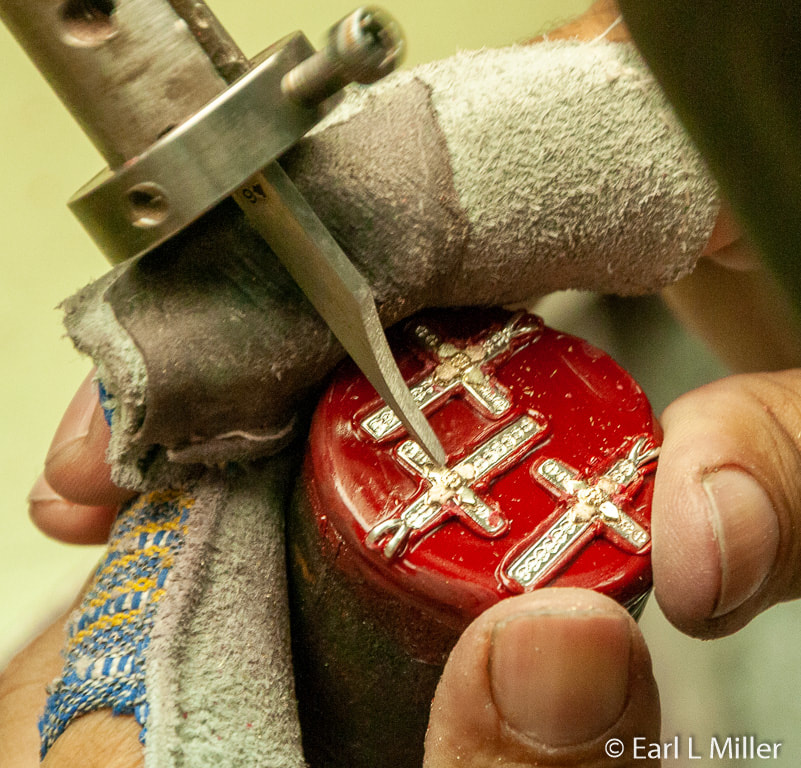Hello Everyone,
If you are seeking to purchase Native American produced pottery, Indian art and wares, or Black Hills jewelry, it’s time to head for Rapid City’s Sioux Pottery, Prairie Edge, and Landstrom’s Black Hills Gold Outlet. If you are fascinated by quality regional and contemporary art, include a stop at Dahl Arts Center.
SIOUX POTTERY
When Sioux Pottery started in 1958, the company had two separate sites for production and sales. Since 1963, visitors have shopped and taken a factory tour at their current location. The company produces a wide variety of handmade vases, urns, lamps, wine chillers, mugs, and other products in matte and glazed finishes. Consumers select from 50 shapes and 16 different colors, of which green and red are the most popular.
Eight Sioux employees handcraft each piece of pottery from casting to painting to hand etching the various Lakota designs and symbols. By taking a tour, visitors can view the entire process.
The company uses red clay from the Black Hills which is sacred to the Lakota Native Americans. It also imports white clay from Kentucky. The breakdown is 60% red clay and 40% white clay. Visitors notice a red casting room and a white casting room. Clay, whether red or white, is mixed in barrels before being placed into molds to form the product. The cast products remain in the molds for a day before being removed. They are then placed on a rack to dry. This step usually takes three days. If a fan is used, they will be dry the next day.
Sanding by hand is the next process. This removes the rough edges and any bumps in the product. Each pot is then checked and touched up.
It then goes to the artist who does banding. This is accomplished by twirling the pottery on a wheel while adding colors to the piece. Each pot is hand painted with two coats.
The next step is etching. Free hand designs are drawn on greenware using pencil lines. Then the artists inscribe these designs into the pottery by scraping away the paint and clay. All of the symbols used are relevant to the Lakota culture. Each piece is hand signed.
Triangular symbols are used by the Lakota to depict nature, their dealings, and important events. The same symbols once dominated the designs used in their bead work and decorations of their skin garments, weapons, utensils, and pottery. Elaborate pieces have detailed paintings of scenes representing Lakota culture.
Each pottery piece goes to the kiln for firing. Sioux Pottery has one large gas fired kiln and three electric smaller ones. This process takes six hours with the heat turned up slowly four different times. If the temperature is not raised slowly, the pottery may crack. Usually four layers of pottery are placed in the kiln at one time. After the pottery is fired, it is then glazed and refired to make it food safe.
Products are sold in the shop or shipped to consumers and stores. In the shipping department, we saw big boxes classified by shape and color.
The company also has a large selection of craft items done by local Sioux artists. This includes dream catchers, artwork, keychains, and many jewelry items. The gift shop also provides factory seconds of their pottery that are half priced.
DETAILS:
Sioux Pottery is located at 1441 E. St. Joseph Street in Rapid City. The phone number is (605) 341-0534. Hours of operation year round are Monday through Friday from 9:00 a.m. to 5:00 p.m. They are closed on major holidays. Tours are always free. You can also buy their products on their web site.
PRAIRIE EDGE
Prairie Edge, a 15,000 square foot retail store, is a cross between an Indian trading post and a magnificent art gallery. For those interested in collecting authentic Plains Indian art, crafts, and jewelry; searching for books about Indian culture; or seeking a unique crafts supply center, it’s a must stop.
The first Sioux Trading Post was started in 1957 by Dennis Lessard, an American-Indian art enthusiast and scholar, and his wife Rosemary in Detroit, Michigan. The Lessards moved their business to the Rosebud Reservation in Mission, South Dakota in 1963. That same year they sold it to Ken and Cathy Vogele from Rapid City, who opened a store in that city. The Vogeles were avid collectors of Native American art.
In 1990, the Vogele’s opened a second store in Rapid City. They sold Sioux Trading Post to Ray and Rita Hillenbrand in 1993, who expanded the business with stores in Deadwood and Sturgis, South Dakota and Santa Fe, New Mexico. The Hillenbrands continued the commitment to selling quality products and preserving the Native American tribal culture. In 2005, Sioux Trading merged the stores into Prairie Edge at the current location. It is now run by the Hillenbrand daughter, Mimi, who also owns and operates the Triple Seven Buffalo Ranch.
The Hillenbrands moved to Rapid City in the early 1980s from Indiana to look after a cattle ranch. Realizing how important the buffalo was to the Native Americans, they switched from cattle to buffalo on their ranch using many parts of their buffalo in their Prairie Edge work.
VISITING THE STORE
On the outside of an historic building that stretches for half a block, you’ll find an Indian sculpture. Inside, hardwood floors and polished cabinetry evoke the spirit of the Old West while the smell of sweetgrass and sound of a soft Lakota flute remind visitors of Native Americans.
The Trading Company is shared on the first floor by the Native American Gallery. It’s a collection of jewelry, pottery, glassware, and decorative boxes. Shoppers find Pendleton blankets, Star quilts, housewares, candles, note cards, and old fashioned toys. Prairie Edge also carries botanical products, herbs, and Native American foods.
Lakota art fills much of the area in many forms. You’ll notice buffalo skulls and robes, weaponry and war shirts, headdresses and pipes, beadwork and quillwork, dresses and cradleboards, bags and pouches, and dolls and amulets. They use many of the same materials, designs, and techniques formerly used by the various Plains Indians.
The turquoise jewelry by Antone LeBeau is impressive. He is a self-taught jeweler who does most of his own lapidary (stone engraving). He likes to use the free form of each stone. LeBeau is a Minnecoujou Lakota from the Cheyenne River Reservation.
Kevin D. Fast Horse’s cradleboards and amulets are also worth noting. He is an Oglala Lakota from the Pine Ridge Reservation who specializes in beadwork. He focuses on intricate Lakota geometric designs as well as the animals significant to his culture.
Prairie Edge’s Sioux Trading Post has rows of display cabinets loaded with beads of many varieties. These include Italian glass as well as Czech, Japanese, trade, vintage, and contemporary beads. The store also carries hides, furs, feathers, shells, teeth, claws, brass, trade cloths, and more for craft projects. Native Americans shop here to create their regalia and different artwork.
With more than 2,600 different styles and colors of glass beads, the store touts its Italian Glass Bead Library as the world’s largest selection of glass beads. This inventory came from the same Venetian guild that supplied fur traders in the 19th century. Prairie Edge acquired the Sociata Venziana Coterie’s remaining inventory, over 70 tons, when the company closed their doors in 1992. Note the high quality examples of finished Plains Indian beadwork. Most of the beads used can be purchased at the Sioux Trading Post.
The Book and Music store is extensive. It covers such topics as history, culture, and art of the Plains Indians. If you are into sewing clothes, you will find patterns for Indian dresses, women’s accessories, Plains style moccasins, and boys’ shirts and pants. Their CD collection of flute ceremonial music helps with learning songs used during Sun Dancing, Sweat Lodge and other observances. Shoppers also find a children’s section and out of print books.
On the mezzanine, you will find their Buffalo Room. It is devoted to buffalo decor and artwork such as paintings and leather furniture.
The Fine Art Gallery is upstairs and offers an outstanding collection for sale. The store prides itself on carrying the finest art of the Northern Great Plains created by regionally and nationally acclaimed artists. You’ll find as many as 80 artists represented, many of whom are local or from the state of South Dakota. A wide scope of mediums is on display - paintings, sculpture, drawings, photography, prints, glassware, pottery, posters, wooden objects, even paper art and ledger art. You’ll also see blocked prints etched out on pottery and butterflies and other insects mounted and framed.
When the Native Americans lost access to the leather animal hides for their artwork, they started using the pages of ledger accounting books to record their visual history. They used colored pens and pencils to do this. These pages were formerly used by Indian agents, traders, and military officers. This ability to switch to paper showed how the Plains Indians could adapt and continue to create.
The ledger art of Donald F. Montileaux, a member of the Oglala Sioux tribe is displayed. He studied under Lakota artist Oscar Howe. Montileaux was inducted into the South Dakota Hall of Fame in 2014 and has won many artistic awards and commissions. His original painting Looking Beyond Ones Self was part of the payload on the space shuttle Endeavor in 1995.
The paper sculptures of Patty and Allen Eckman are admirable. Allen is known as “the world’s premier cast paper sculptor.” His wife Patty is widely recognized as “wildlife’s premier cast paper sculptor.” She enjoys wildlife, birds, and flowers.
The two employ the same method to accomplish their work. According to their brochures, both use an acid free paper pulp produced from cotton and abaca. They cast the pulp into silicone rubber molds which they have made from original clay sculptures. By using vacuum pressure in the mold, they press the paper, extracting most of the water. The paper then completely dries by evaporation while it is still in the mold. The dry and hard casts are removed from the mold. This is when cast additions and alterations as well as sculpting and detailing start. Some works take many months to complete.
Karen Sebesta, who is from Hudson, Wisconsin, had pottery bowls on display. She produces her own clay and hand builds her pottery using the coiling technique. Her pots are hand polished rather than glazed. She uses deer bones, steel, and stones for a high-gloss finish and nylon for a satin finish.
We also noted the wood carving of Donald Farnsworth from Keystone, South Dakota. He uses unusual laminated wood recovered from rejected construction materials such as beams and old timbers. He often incorporates coins or other accent pieces into his project. While he uses mostly domestic woods, he occasionally uses exotic wood from South America and other countries for trim and accents.
DETAILS
Prairie Edge is located at 606 Main Street in Rapid City. Their telephone number is (605) 342-3086. The store is open daily. Hours are Monday to Saturday 9:00 a.m. to 7:00 p.m. and Sunday from 10:00 a.m. to 5:00 p.m. They also sell their items on their web site.
LANDSTROMS BLACK HILLS GOLD JEWELRY
Black Hills jewelry has three characteristics. It is made with tricolored gold in pink, green, and yellow. The jewelry features elements such as grape leaves, clusters, and vines. By a 1981 federal mandate, this style of jewelry must be manufactured in the Black Hills of South Dakota in order to be described as “Black Hills Gold Jewelry.”
Since 1878, Landstroms, in Rapid City, has been making the best quality Black Hills Gold rings, bracelets, earrings, necklaces and watches. While some companies use automation for some of their Black Hills jewelry processes, each piece of Landstrom jewelry is totally handcrafted. This is why no two pieces of Landstrom jewelry are alike.
The company has a lifetime guarantee that the jewelry is free from any manufacturing defects. Damage due to normal wear and exposure to chemicals is excluded. Complimentary chains, vendor parts, and gemstones are other exceptions unless the damage is due to a manufacturing defect. Shipping is free. Orders for in-stock items ship within two business days while an out of stock or custom made item ships within 10 business days.
A LITTLE HISTORY
The legend goes that in 1876, Henri LeBeau, a French master goldsmith, came to the Black Hills hoping to earn his fortune in gold. He met with little success, One day, tired and discouraged, he fell asleep dreaming of the vineyards of France. When he awoke, he decided to apply his skills casting grape leaves, tendrils, and vines into three colors creating Black Hills jewelry. He opened up a shop producing jewelry in Central City, South Dakota, one of the mining camps.
In reality, goldsmiths throughout the various mining towns in California, Idaho, Nevada, Montana, and Colorado had always practiced their trades. What started as the design of a single grape expanded into clustered leaves and fruit. LeBeau had actually brought this design from other western gold camps.
In 1878, Charles Barclay and S.T. Butler, who brought additional designs from Virginia City, Montana, opened their own jewelry store in Central City. It is Butler who is actually regarded as the father of Black Hills Gold Jewelry. He fashioned the trigold design and assembled grape leaves, grape clusters, cuttings from grapevines, and tendrils by hand. His company lasted through four generations.
S.T.’s company was purchased by his son George in 1878 who did little to alter the business. That changed when George Butler assisted his nephew F. L. (Frank) Thorpe in setting up a shop in the town of Lead. Both men continued to make jewelry in separate shops. However, Thorpe implemented new production methods, created 600 new designs without changing the basic grape and leaf design in three colors, and expanded the trade territory.
In the early 1900s, Frank’s brother, Clarence, ran a small shop in Lead. His shop was sold to Frank and Edward O. Lampinen, one of Clarence’s employees. Frank Thorpe and Lampinen formed a partnership under the name of F. L. Thorpe Company. The men operated a manufacturing plant in Deadwood. The partnership dissolved when hard times fell upon the company. Lampinen named his shop the Black Hills Jewelry Manufacturing Company while Thorpe continued under his own name. The Thorpe Company continued in the family until 1969 when Lloyd and Betty West purchased the company and ran it for several decades.
In 1944, Ivan Landstrom bought Black Hills Jewelry Manufacturing from E. O. Lampinen and moved the company to Rapid City. After Landstrom died in 1968, it passed to his two surviving daughters, Mary Jo and Constance. In 1995, Landstrom’s Original Black Hills Gold Creations purchased F. L. Thorpe Company making Black Hills Gold Jewelry come full circle. Constance Drew headed the company until her passing in 1998 when her daughter and son took her place.
There have been major changes in companies producing Black Hills gold since the 1980s when several new companies were born: South Dakota Gold, Mount Rushmore Gold, and Coleman. In 2010, South Dakota Gold went out of business selling its designs to Mount Rushmore Gold. Mount Rushmore Gold purchased Landstroms in 2014.
Since 2015, Riddles Group, Inc. (TR Jewelry Concepts) who owns 60 jewelry stores in a nine-state area, has owned all of the above companies’ designs and in 2017 purchased Coleman’s designs who closed its doors that year. The company also makes diamond jewelry, wedding rings and bands, body jewelry, and gold on silver jewelry.
HOW THE JEWELRY IS PRODUCED
The company’s production of its jewelry is extensive. From the piece’s design to its polishing, each step is handcrafted by up to 50 trained artisans. It starts with six local designers who come up with between 150 and 200 designs a year. Not all designs go into production. The approved designs are carved in wax. This wax model is cast into a master mold free of imperfections, enabling all future reproductions to be made from the best possible original.
Rubber molds are required to make duplicates of each style. To make these, a silver master is placed inside the sheets of rubber which are melted around it. Several layers of rubber are melted together. Once the rubber mold cools, it is cut open and the silver master removed, providing an exact impression of the master.
Hot wax pellets are then poured into the rubber mold cooling in seconds. This new wax jewelry is attached to a central wax rod. From 60 to 100 pieces are attached, giving the appearance of a tree.
The wax tree is placed inside a metal cylinder and filled with a liquid plaster of Paris called investment. A vacuum is used to extract any air bubbles when this investment is poured over the wax tree. This eliminates any air pockets between the investment and the wax tree. After the investment hardens, up to 24 cylinders are placed at one time in a kiln for 13 hours at 1300 degrees. This allows the wax to melt and burn away, known as lost wax casting, leaving a hollow impression of the tree.
While the cylinder is still hot, it’s placed in a vacuum casting machine. Molten gold at 1800 degrees is now sucked into the mold’s empty cavity. Once this gold cools to a solid form, the cylinder is plunged into a vat of cold water. This causes the plaster to crumble and dissolve leaving a tree of gold where the wax tree once was.
At this step, all gold jewelry is cut from the tree and the screws holding them to the tree ground off. The company uses more than 300 shapes and sizes stamped from 12 carat gold sheets to make the leaves. They receive this gold from a refinery in Massachusetts. To make the pink leaves, 50% gold is alloyed with 50% copper. The green tone is 50% gold alloyed with 40% sterling silver and 10% zinc. The pure gold is 24-karat while the pink gold and green gold are 14-karat.
The leaves are domed with a dabbing brush so their look is more natural. They are then spot welded in place. An electrical arc produces a small tack weld that temporarily holds each leaf. Once they are in the correct position and angle, they are soldered on. The soldering syringes contain a paste solder mixture of 10 or 14-karat gold or sterling silver depending upon the piece. The jewelry then travels through a 1400 degree conveyor for silver and 1500 degrees one for gold melting the solder but not the metals. This takes about 20 minutes. Each piece has a certain number of points that must be soldered.
Skilled craftsmen use an engraving tool that functions much like a miniature chisel in the process called wriggling. The tool applies a frosted finish to the leaves by gently rocking back and forth along the surface.
This is followed by vein cutting where veins are etched into the leaf by using an air driven, pointed engraver. Since this is done free hand, it means each leaf is unique.
On many styles, a diamond tipped tool, that spins at 40,000 revolutions per minute, carves little notches into the jewelry’s edges. Since these notches act as mirrors, they reflect light making the jewelry look brighter. Mt. Rushmore Gold developed this process called diamond cutting. It is one of the company’s signatures.
Next step is polishing. A muslin buffing wheel with polishing compounds brings a luster to the jewelry. If stones are part of the jewelry, they are sent to the stone setting department. This is where genuine and synthetic stones are set.
Each piece is then carefully inspected to insure each meets the company’s high standards. The process takes 2-1/2 to 3 days. Pieces are then packed in distinct boxes.
DETAILS
Landstroms Black Hills Gold Outlet where you can take the tour is located at 2707 Mt. Rushmore Road in Rapid City. Their phone number is (605) 343-7099. Hours of operation are Monday through Friday 8:00 a.m. to 7:00 p.m., Saturday 9:00 a.m. to 6:00 p.m., and Sunday 9:00 a.m. to 4:00 p.m. Tours are free and are on weekdays only. No photographs are allowed on the tour. We took ours when the manager accompanied us after our tour. Check the company and their products out on their web site.
DAHL ARTS CENTER
The Dahl Arts Center is the largest art center in western South Dakota. In addition to five galleries, it has a children’s interactive gallery, the Cyclorama Mural of American Economic History, and a gift shop featuring the work of local and regional artists. Community events and performances are held in its 250-seat event center several times a month.
In October 1974, the Center opened its doors in Rapid City as the Dahl Fine Arts Center to house the Cyclorama. The facility was named after and funded by local banker Art Dahl. In 2009, it nearly tripled in size when it purchased the facility next door. It is now a municipal facility supported by the City of Rapid City and managed by the Rapid City Arts Council.
CYCLORAMA
The Cyclorama Mural of American Economic History, located in the Cyclorama Gallery, is a unique 180-foot oil-on-canvas panorama that spans 200 years. This exquisite mural is enhanced by narration, a musical background, and special lighting effects.
It was designed and created by Bernard Preston Thomas (1918-1994). A native of Sheridan, Wyoming, he received a B.S. degree in art from Woodbury College in Los Angeles. After World War II, he studied art at Ecole de Beaux Arts in Paris before returning to the United States to pursue mural painting. He maintained his studio in Boynton Beach, Florida.
According to the Center’s guidebook on the mural, Thomas said one of his most difficult commissions was for Everglades National Park’s visitors center. He portrayed the park’s ecology.
The mural depicts segments of United States economic history that had a large impact on America. The upper sections concentrate on the historic past while the lower sections focus on 1974. Thomas portrays a variety of subjects. These include immigration, westward expansion, the Industrial Revolution, transportation, agriculture, inventors, our country’s natural resources, space, and war.
He spent two years in Boynton Beach researching material and designing the mural. He started installing his magnificent oil painting in mid-July 1974, prior to the Center’s public opening, and completed it in August 1975. He worked entirely alone on the project.
EXHIBITS WE SAW
When we were at the Center in late September 2018, we saw two exhibits. The Artists of the Black Hills had their 13th Annual Exhibition. We also viewed the North Plains Watercolor Society show. The Society has 35 to 40 members ranging from amateurs to professionals. To see samples of this artwork, go to Earl’s photographs at the end of the article.
CURRENT EXHIBITS
The 14th annual exhibition by members of Artists of the Black Hills will run until November 30, 2019. It showcases the work of more than 35 professional artists whose artwork includes numerous styles and mediums. The organization consists of professional artists, artisans, and galleries whose common goal is to present and promote the Black Hills region as an art destination.
On display through January 25, 2020, museum visitors will see the Black Hills Collects exhibition. It showcases artwork and crafts that have been collected by 20 Black Hills families and individuals. The exhibit includes paintings, photography, lithographs, watercolor drawings, glasswork, ceramics, fiber arts, and beaded moccasins. The Dahl Arts Center’s exhibits committee juried this show selecting over 70 pieces representing close to 60 identified artists and a few unknown ones. Eighteen of these artists are regional.
From November 15 through February 22, the Dahl will present Shadow of Doubt | Mavis Anderson. Anderson is a self-taught artist who has worked out of her home in various mediums since the mid 1960s. The show consists of her paintings and “spirit figures.”
The Rapid City Arts Council has a permanent collection of around 200 pieces and growing. Its primary focus is on the work of regional artists and contemporary art. It also contains a piece by Marc Chagall, one by Salvador Dali, and two by Oscar Howe. Their permanent collection is displayed in an annual show.
In the Art Start Studio, the children’s interactive gallery, youngsters and their families experience and create art in many mediums. These range from sculptures children can hand hold to murals. All arts are encouraged - dance, theater, literature, and visual arts. The Center furnishes supplies for various activities. An adventure such as making a gingerbread house is held monthly.
SPECIAL EVENTS AND CLASSES
The Center holds several special events and classes on a monthly basis. Classes are available in several mediums for adults, teens, and children. These range from basic drawing to pottery, paper plate art, knitting, and basket weaving. To learn more about these, visit their web site.
DETAILS
A gift shop is on the premises. It sells everything from paintings and photographs to handwoven scarves, accessories for the home, and homemade cards.
Tours are available with a two week notice.
The Dahl Arts Center is located at 713 7th Street in Rapid City. The telephone number is (605) 394-4101. Admission is free though donations are gratefully accepted. Hours are Monday through Friday 10:00 a.m. to 6:00 p.m. and on Saturday from 10:00 a.m. to 5:00 p.m. The Center is closed on Sunday.
Sioux Pottery Exterior
Pouring the Clay into the Molds
Banding the Pottery
Etching the Pottery
Sending the Pieces to the Kiln for Firing
Finished Products
Prairie Edge Exterior with Statue Titled Hunkayapi
Native American Drums
Antone LeBeau's Impressive Turquoise Jewelry
Kevin D. Fast Horse's Beaded Creations
Paintings in the Fine Art Gallery
Paper Sculpture by Allen Eckman
Pottery by Karen Sebesta
One of Donald Farnsworth's Wooden Bowls
Black Hills Gold Outlet
A Beautiful Black Hills Jewelry Piece
A Fine Crafted Black Hills Jewelry Necklace
Setting the Various Pieces on to the Gold
Wriggling
Cyclorama Mural of American Economic History
Another Scene from Cyclorama Mural of American Economic History
Section of Mural Showing American Heritage
The Importance of the American Farm Family
Cyclorama's Depiction of War
Faithful Friends by Judy Thompson, Artists of the Black Hills 13th Annual Exhibition
Tools of the Trade by Mary B. Hunt, Artists of the Black Hills 13th Annual Exhibition
Backseat Driver by Gwen Roy, Hon. Mention, North Plains Watercolor Society Show - 2018
5 Pounds 9 Ounces by Jim Arbetter, Gold, North Plains Watercolor Society Show - 2018
